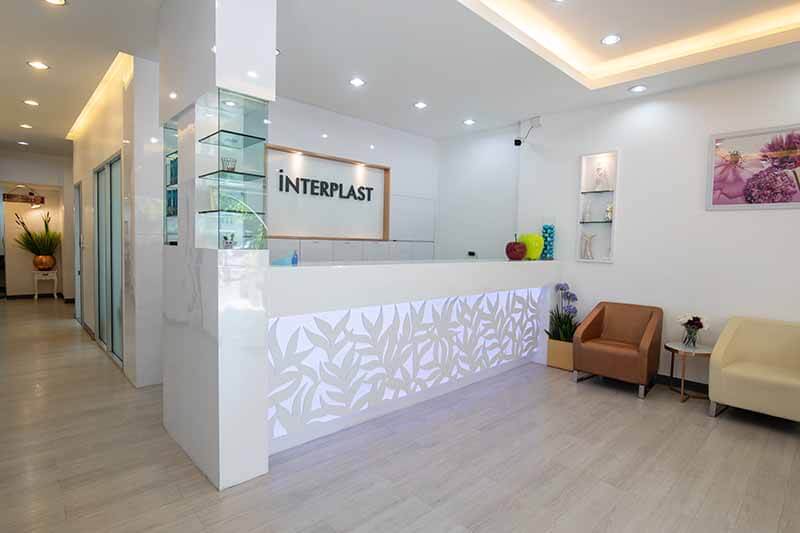Managing Swelling After a Facelift
Facelifts come in various forms, each designed to address specific areas of the face. Each technique focuses on particular concerns, such as sagging skin, wrinkles, or volume loss in different parts of the face. If you’re unsure which option is right for you, you’re not alone. Our surgeons can determine the most suitable procedure through a detailed assessment of your unique appearance and goals. In the meantime, here’s a short guide to the main facelift types and techniques.
Table of Contents
Full Facelift
A full facelift is a comprehensive surgical procedure aimed at repositioning tissues that have shifted out of place due to aging. This process helps define the jawline, enhance the neck/chin angle, and re-elevate cheek fat to restore a youthful contour over the cheekbones. While the results can be transformative, facelifts don’t improve skin quality, however. To improve skin texture, tone, or pigmentation, non-surgical treatments such as laser resurfacing or chemical peels can be combined with a facelift for optimal results.
There are two main techniques commonly used in facelift surgery: the SMAS facelift and the deep plane facelift. At Interplast Clinic, our surgeons specialize in the SMAS (Superficial Musculoaponeurotic System) plication technique, which focuses on lifting and tightening the muscle layer beneath the skin. This layer is lifted separately from the skin, which is then repositioned and re-draped to achieve a natural, rejuvenated appearance. The SMAS technique allows for precise tightening of facial muscles while also addressing loose skin, resulting in a refreshed and youthful look. In contrast, the deep plane facelift involves lifting the skin and the underlying muscle layer together as one unit.
The SMAS facelift typically requires an incision starting at the temple, extending around the hairline, and curving around the ear. Recovery involves about four weeks of downtime, during which patients experience bruising and swelling that peak around days three to four. Residual swelling can persist for several weeks, but once healed, the results are long-lasting. While a facelift can’t stop the aging process, most patients won’t need to repeat the procedure in their lifetime.
Patients coming in for a full facelift are typically a bit older, in their 50s or 60s, and tend to present with extensive signs of aging, such as sagging in the jowls and central face. These signs of aging are more pronounced compared to younger individuals who might opt for a mini facelift. While a full facelift doesn’t stop the aging process, it offers a significant rejuvenation that can last for decades. In contrast, a mini facelift performed in one’s 30s or 40s may require additional procedures as aging progresses.

Mini Facelift
The mini facelift is actually slightly more invasive than the name might suggest. It involves a fairly extensive incision that begins at the top of the ear, extends down around the front, continues behind the ear, and follows along the hairline. While this is not exactly a small incision, in the hands of a skilled surgeon, the incision will be minimally noticeable and typically heals very well over time.
A mini facelift is appropriate for someone looking to address minor age-related changes, primarily in the lower part of the face. This procedure rejuvenates the appearance by lifting the jowls, which enhances jawline definition, and tightening lax skin under the chin. It works by tightening the muscle layer and the connective tissue layer beneath the skin. Once the deeper layers are adjusted, the skin is repositioned horizontally for a natural look while avoiding an overly tight or “pulled” appearance.
Mid Facelift
As the name suggests, the mid facelift focuses on addressing visible signs of aging in the mid-face area, including the cheeks and under-eye region. With age, the fat pads around the eyes tend to become heavier, leading to under-eye bags. Additionally, the cheek pads lose volume and descend, creating hollowness and deeper facial lines such as nasolabial folds and marionette lines.
While these concerns can sometimes be temporarily treated with dermal fillers, the effects of fillers typically last only 6 to 12 months before they naturally break down and dissolve. As a result, they require ongoing maintenance and do not provide a permanent solution.
The mid facelift offers a long-lasting alternative by lifting the cheek pads back into their original position. This not only restores volume to the mid-face and reduces hollowness but also improves the appearance of the under-eye area. The procedure is often performed endoscopically, involving small incisions to reposition the skin over the cheekbones. This minimally invasive approach provides excellent rejuvenation with less downtime compared to a full facelift.
The mid facelift is typically recommended for patients over the age of 45 who have noticeable signs of facial aging. The results are significant and long-lasting, making it an effective solution for rejuvenation of the mid-face area.
Temporal Lift (Brow Lift)
A brow lift, also known as a temporal lift, targets the upper third of the face, in contrast to a full facelift, which focuses on the central and lower third parts of the face. For patients whose primary concerns include forehead wrinkles, droopy brows, or a constant “frowny face”, a brow lift is often the most suitable option.
The procedure smooths the forehead, raises droopy eyebrows, and flattens the temples, effectively eliminating forehead wrinkles and restoring a more youthful, relaxed expression. This minimally invasive surgery involves a small incision along the hairline to access and lift the skin and underlying muscles. The skin is then re-draped and sutured, with the scar discreetly hidden by the hairline.
Compared to a full facelift, a brow lift requires a shorter recovery time while delivering significant rejuvenation in the upper face. By addressing forehead lines and sagging brows, a brow lift can take years off your appearance, providing natural-looking and long-lasting results.
Neck Lift
A neck lift is appropriate for patients who primarily have skin laxity in the central portion of the face and neck, without significant sagging in the upper face. The incisions for a neck lift are positioned lower than those for a facelift, beginning around the earlobe, extending behind the ear, and curving along the natural hairline.
These incisions are strategically placed to be well-concealed within the natural contours of the ear and hairline. Once healed, the scars gradually fade and become virtually invisible over time. Many patients will feel confident enough to even wear their hair back without revealing any evidence of surgery.
Non-Surgical Facelifts
This category includes non-invasive treatments such as Ultherapy, which uses ultrasound heat energy to tighten and rejuvenate the skin. While these are not actual facelifts, they can improve skin quality to some extent. However, they have only limited ability to lift the skin and cannot address advanced signs of aging or re-contour the face in cases of significant skin laxity.
The results from these procedures typically last from 6 months to a year but are not as dramatic as those achieved with a surgical facelift, particularly for more advanced signs of facial aging. That said, surgical facelifts do not improve skin quality or provide an effective solution for wrinkles, which is where non-surgical solutions can complement surgery for optimal results.

What Type of Facelift Is Right for Me?
This varies based on the individual and their specific concerns. Our surgeons begin by assessing the skin’s condition and any shape-related issues. Often, age is a key differentiating factor. Mini facelifts and neck lifts are generally suited for younger patients with minor age-related concerns, such as skin laxity around the neck, jawline, or jowls. A typical mini facelift patient is between 40 and 55 years old. Genetics also play a role, but younger patients tend to have less advanced issues compared to those in their 60s, who are more likely to benefit from a mid-facelift or full facelift.
Finally, it’s essential to understand the recovery process and have realistic expectations about what is required before and after surgery. A full facelift requires a longer recovery period of approximately 4 weeks, whereas a mini facelift typically involves only 1-2 weeks of downtime. Similarly, a brow lift requires about 14 days of recovery.














